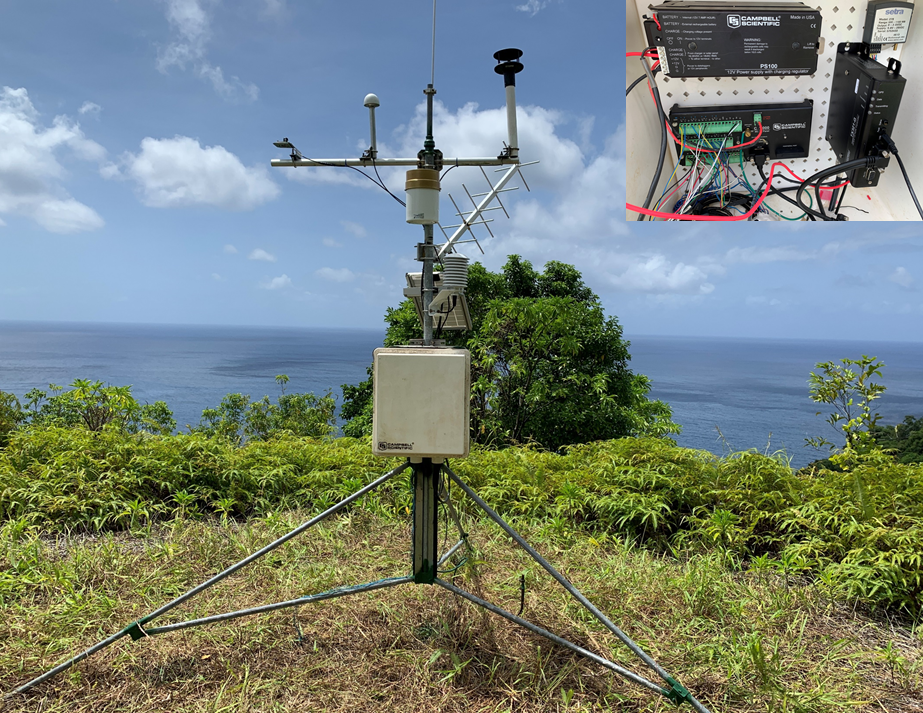Each weather station in the network is mounted to a 10-foot tripod (Campbell Scientific CM10 tripod) in order to minimalize the amount of ground and visual disturbance. The stations are fully self-contained and powered by a 10-watt solar panel/battery. At the heart of each station, a scientific datalogging device (Campbell Scientific CR1000) controls the data acquisition processes, storage, and telemetry functions. Data from each station in the network is telemetered on an hourly basis, via a GOES satellite transmitter, to the NOAA Wallops Island Command and Data Acquisition Station (Wallops Islands, VA). From there, data is acquired via automated routines by the Desert Research Institute (Western Regional Climate Center) in Reno, Nevada for archiving and near real-time public access via the web.
Each station is instrumented to measure a standard set of climatological variables including:
- air temperature at 2 meters above the ground (Campbell Scientific EE181-L)
- relative humidity at 2 meters above the ground (Campbell Scientific EE181-L)
- barometric pressure (Campbell Scientific CS100)
- wind speed and wind direction at 10 feet above the ground (Windsonic1 two-dimensional ultrasonic)
- precipitation (Campbell Scientific T525 tipping bucket)
- incoming solar radiation (Campbell Scientific CS-301 pyranometer)
- soil temperature at 2,4,8, and 20 inches (copper/constantan thermocouple wire)
